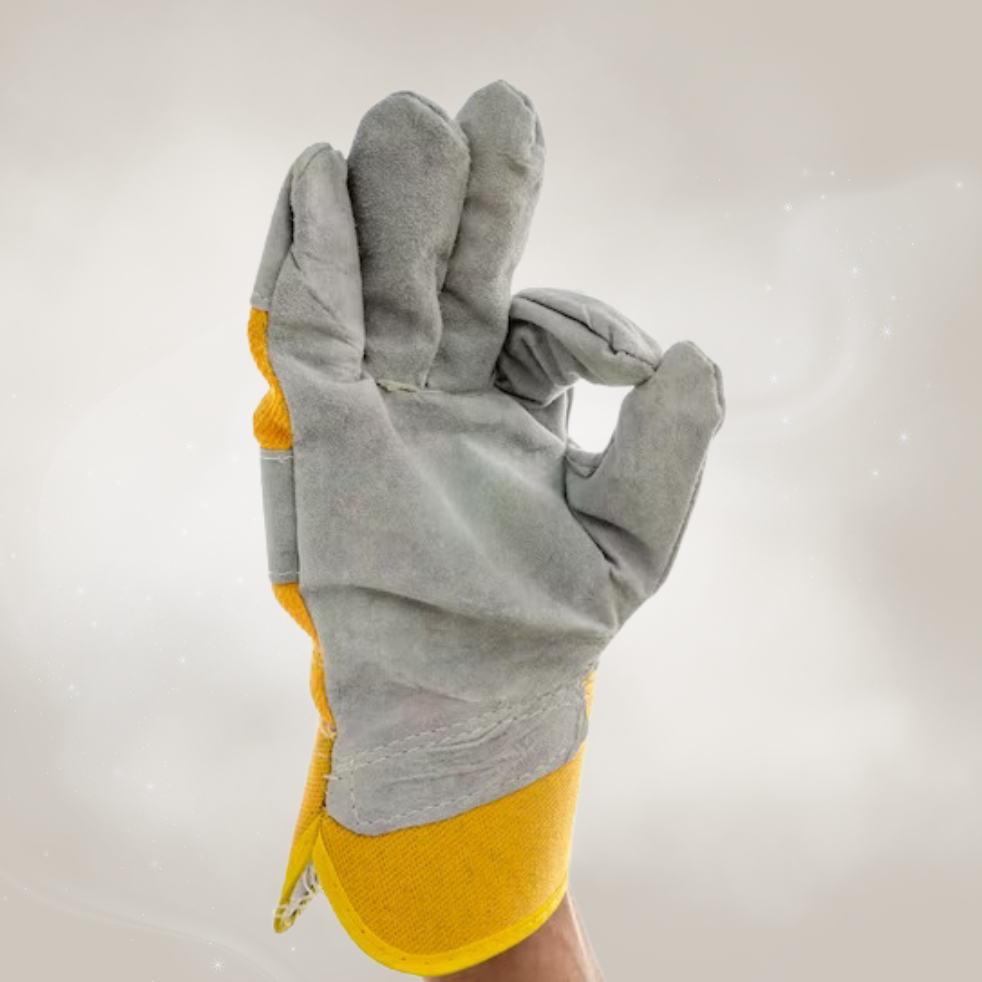Types of Safety Hand Gloves and Their Uses
Safety hand gloves are essential for workers who handle hazardous materials, chemicals, tools, or machinery. They protect the hands from injuries such as cuts, burns, punctures, abrasions, and infections. However, not all gloves are the same. Different types of gloves offer different levels of protection, comfort, and dexterity. Choosing the right glove for the job is crucial for ensuring safety and productivity.
In this blog post, we will introduce you to five main types of safety hand gloves that we sell at Gibadi, and explain their features, benefits, and applications. We hope this will help you make an informed decision when buying safety hand gloves for yourself or your employees.
Leather Gloves
Leather gloves are made from tanned animal hides, such as cowhide, pigskin, or goatskin. Leather gloves are durable, flexible, and resistant to abrasion, heat, and fire. They are suitable for tasks that involve handling rough or sharp objects, such as metal, wood, or glass. Leather gloves also provide a good grip and prevent slippage. Some leather gloves have liners or coatings to enhance their protection from cold, moisture, or chemicals.
At Gibadi, we offer a wide range of leather gloves, such as drivers, welders, riggers, and electricians gloves. You can choose from different leather grains, sizes, and colors to suit your preferences and needs.
String Knit Gloves
String knit gloves are made from woven or knitted yarns, such as cotton, polyester, nylon, or acrylic. String knit gloves are lightweight, breathable, and comfortable. They are ideal for tasks that require fine motor skills, such as assembly, inspection, or packaging. String knit gloves can also be used as liners under other gloves to provide extra warmth or absorb sweat.
At Gibadi, we have a variety of string knit gloves, such as plain, dotted, or coated gloves. You can also find string knit gloves with engineered yarns, which combine two or more fibers to create stronger and more protective gloves. For example, we have gloves with cut-resistant, anti-static, or flame-retardant yarns.
Mechanics Gloves
Mechanics gloves are a combination of leather and string knit gloves. They are designed to protect the hands from mechanical hazards, such as impact, vibration, or pinch. Mechanics gloves have different layers of materials sewn together to create zoned protection. This means that different parts of the glove have different levels of padding, reinforcement, or coating to match the specific risks of each area.
At Gibadi, we stock a selection of mechanics gloves, such as impact-resistant, anti-vibration, or oil-resistant gloves. You can also find mechanics gloves with features such as velcro closure, knuckle protection, or fingerless design.
Chemical Gloves
Chemical gloves are made from synthetic materials, such as latex, nitrile, neoprene, or vinyl. Chemical gloves are designed to repel liquids and fluids, and to resist chemical degradation. They are suitable for tasks that involve handling or exposure to corrosive, toxic, or infectious substances, such as acids, solvents, or blood. Chemical gloves have a fully coated outer shell to prevent penetration and soak-through of liquids.
At Gibadi, we offer a range of chemical gloves, such as disposable, reusable, or supported gloves. You can also find chemical gloves with different lengths, thicknesses, and textures to fit your requirements and preferences.
Disposable Gloves
Disposable gloves are made from thin and flexible materials, such as latex, nitrile, vinyl, or polyethylene. Disposable gloves are intended for single-use only, and are discarded after use. They are used to prevent cross-contamination and infection, and to protect the hands from minor irritants, such as dirt, dust, or grease. Disposable gloves are commonly used in medical, food, or cleaning industries.
In addition to these types of gloves, electrical engineers also need to wear gloves that are rated for the voltage they are working on. These gloves are called insulating gloves and they are made from rubber or other non-conductive materials. They are classified into three types according to the web search results:
- Type I gloves: These gloves protect against low-voltage applications up to 1,000 volts.
- Type II gloves: These gloves protect against medium-voltage applications up to 7,500 volts. They are usually used for industrial or utility work.
- Type III gloves: These gloves protect against high-voltage applications up to 17,000 volts. They are usually used for power generation or transmission work.
We hope this blog post has given you some useful information on the types of safety hand gloves and their uses. If you have any questions or need any assistance, please feel free to contact us at Gibadi. We are always happy to help you find the best safety hand gloves for your work. Thank you for choosing Gibadi, your trusted partner for safety PPE.














